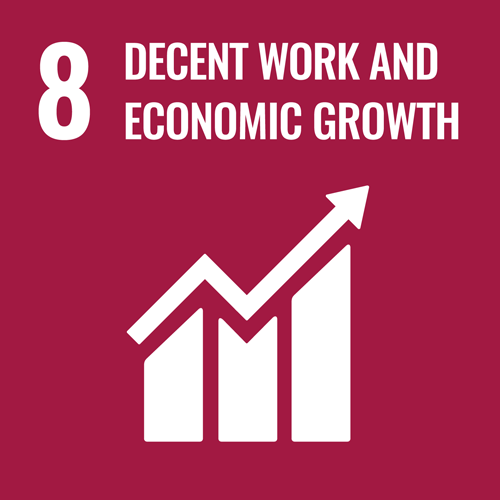“Whenever we view video, take photographs, see digital displays in places like the Great Wall, Buckingham Palace, Shibuya or Times Square, we are benefiting from technologies based on the results of ITU-T Study Group 16’s work,” says Huawei’s Noah Luo, Chairman of the ITU standardization expert group for multimedia, ITU-T Study Group 16 (SG16).
Multimedia innovation continues to accelerate, as does the evolution of SG16. ITU News spoke with Noah Luo to learn more about SG16’s work and the results of its recent meeting in Ljubljana, Slovenia, 10-20 July 2018.
Could you offer us a brief introduction to the work of SG16?
SG16 provides fundamental support to advances in multimedia. This support is crucial to our fast-developing global digital society. SG16 remembers the first VoIP call, the first video conference, the first IPTV show, the first YouTube video – we remember them well, because it is the standards developed by SG16 that have made all these amazing things possible, bringing us multimedia services that were unimaginable three decades ago.
What are the standards that SG16 is best known for?
Our video coding work has been successful to an extent matched by few other standards initiatives. Almost all video we view, over any medium, is coded using standards developed by SG16. These standards also result from one of the world’s most successful standards collaborations, developed in collaboration by ITU-T SG16 and ISO/IEC MPEG. I am glad to highlight that this work was honoured in Hollywood with its second Primetime Emmy Award in October 2017.
Could you offer us an update on this video coding work?
This work has a strong tradition of doubling video-compression efficiency every time we deliver a new standard. H.264/AVC and H.265/HEVC, the two latest in the series, will continue to meet industry needs for years to come. But we are always looking to the future. A new standardization project has been formalized after an exploratory phase – the ‘Joint Video Experts Team’, the new task force borne of the continued collaboration of our two organizations, aims to deliver a new standard by 2020 with significant performance gains over H.265/HEVC. This standard will be known as Versatile Video Coding.
RELATED: Beyond HEVC: Versatile Video Coding project starts strongly in Joint Video Experts Team
As its name suggests, it will bear a number of enticing features beyond just an increase in compression efficiency, such as support for a broad range of deployment scenarios. This project has already demonstrated compression efficiency gains over HEVC of 40 per cent or more.
Your recent meeting in Ljubljana agreed the establishment of two new Focus Groups on ‘AI for health’ and ‘vehicular multimedia’. Before we discuss their aims, could you explain the concept of a Focus Group and how they support your work?
Focus Groups accelerate our work in areas of growing strategic importance to ITU membership, areas where we see immediate standardization demands. These groups are open to all – they welcome ITU members as well as individuals and other entities without ITU membership. Focus Groups encourage input from as many stakeholders as possible. In recent years, there has been a clear trend of ICTs meeting the demands of different vertical markets, giving rise to a range of cross-over opportunities. Focus Groups – as a flexible, agile form of organization – are well-suited to this purpose. Their intensive studies give us a strong platform to develop new standards based on their delivered specifications or technical reports.
The Focus Group on ‘AI for health’ looks particularly interesting. Please tell us more about it.
Health and multimedia experts see huge potential for AI to contribute to more effective, accessible healthcare. The smartphone camera can now capture images of the quality necessary to guide medical interventions. AI-powered diagnostic tools, analyzing smartphone images, are proving more accurate than human specialists in detecting certain skin and eye diseases, for example.
RELATED: 3 ways AI can turn mobile phones into universal healthcare providers
We can help patients to assess their symptoms, doctors in underserved areas to focus on critical cases, and save great numbers of lives in emergencies by sending diagnoses to hospitals before patients arrive to be treated. What this group aims to do is make such capabilities available worldwide. With our close collaboration with WHO and other medical and health industry alliances around the world, we will bring together a rich set of expertise. This cross-pollination of expertise will enable AI technologies to support marvelous progress in health. We aim to assist AI for health solutions in achieving the scale necessary to make them attractive to governments. Learn more about the new Focus Group.
AI for health was one of the areas in focus at the recent AI for Good Global Summit, 15-17 May 2018. Did the summit influence the establishment of the new Focus Group?
The leader of the AI for health track at the summit called AI and health ‘natural companions’. The idea of a new Focus Group supported by ITU and WHO was first floated at the summit, with the summit’s participants agreeing that the combination of AI and health could make a very meaningful contribution to sustainable development. 15 projects were proposed in the summit’s AI for health track and there was a strong feeling that all projects would benefit from a common platform to share data, resources and expertise – collaboration that would assist these projects in achieving significant scale.
The second Focus Group on vehicular multimedia seems more within traditional fields of SG16 work?
Yes, this is a topic that SG16 is quite familiar with, but this Focus Group certainly represents a new direction in this work. SG16 has spent a number of years developing vehicular multimedia gateways, always with a strong focus on ensuring that multimedia does not exacerbate driver distraction. However, the proposal of this new Focus Group was motivated by new industry developments. The satellite and mobile communications industries are promoting the new opportunities arising with the integration of satellite, terrestrial and mobile communications. The Focus Group aims to take advantage of this direction of innovation. We are seeing reliable wide-area coverage becoming available at low cost, with latency low enough to support highly interactive multimedia applications, applications that can in future be brought into our vehicles. And when we consider that we will see automated driving moving onto public roads in the years following 2020, our vehicles look set to become hubs of entertainment and smart mobile offices – this is the level of sophistication in vehicular multimedia to which SG16 is now turning its attention. Learn more about the new Focus Group.
And what are some of the new ITU standards nearing approval under SG16 responsibility?
Our meeting in Ljubljana achieved consent [first-stage approval] of ITU’s first three standards for ‘Immersive Live Experience’, standards that provide an architectural framework, requirements and use cases. These standards will support industry in bringing the sensation of live events to remote audiences, replicating the experience of being present at the event venue. This advanced set of technologies will create a multimedia environment in which viewers will experience realistic perceptions of sound, lighting and space, enabling the reconstruction of an environment at remote sites using life-sized 3D presentations of people and objects and recreation of the sounds and sensations of on-site participation.
RELATED: How the Wayfindr Open Standard uses new tech to help the visually impaired
Our project with WHO on the safe listening of music players is also nearing the delivery of the first international standard in this domain, with this standard achieving consent in Ljubljana. Other notable agreements include the consent of a framework for telemedicine systems using ultra-high definition imaging, as well as range of new standards for digital signage. We have also found consent on the revision of the ITU standard providing audio-based navigation systems for people with visual impairments, alongside a procedure to ensure compliance with this standards.
And in addition to these two new Focus Groups, are there other new directions in SG16 work that you would like to highlight?
Yes, in fact, our meeting in Ljubljana also created new SG16 Questions [work streams] on ‘AI-enabled multimedia applications’ and ‘distributed ledger technologies and e-services’.
In the ITU workshop preceding our meeting, it was interesting to see AI permeate nearly every aspect of our discussions. Advances in AI are certain to gain a progressively larger share of SG16 work in years to come. We heard that data preparation – in particular data labelling, a very challenging task in the field of multimedia – stands to benefit from greater collaboration. Discussing the path to ‘intelligent multimedia’, in addition to data processing and management, the workshop highlighted another three fields of ITU standardization work now giving rise to new requirements relevant to AI. Demand for more in-depth data mining and analysis – more sophisticated computation – will alter multimedia architectures. The need for more user-friendly representation has significant implications for multimedia coding, and new frame structures are being proposed as a result. And new QoS [Quality of Service] requirements call for new metrics and measurement methodologies, specifically to evaluate the performance of intelligence features.
RELATED: Distributed Ledger Technology: ITU Focus Group to propose standards roadmap
DLT [Distributed ledger technology] is a fast-growing technical area. For those not familiar with the term, think of Bitcoin, which uses which uses DLT as an underlying technology. DLT and multimedia have very close relationship. Many new types of multimedia applications and multimedia-oriented e-services can be made possible with the help of DLT. We expect to see more and more exciting changes in this direction in the future.
For more information on the work of ITU-T Study Group 16, visit the group’s homepage.















